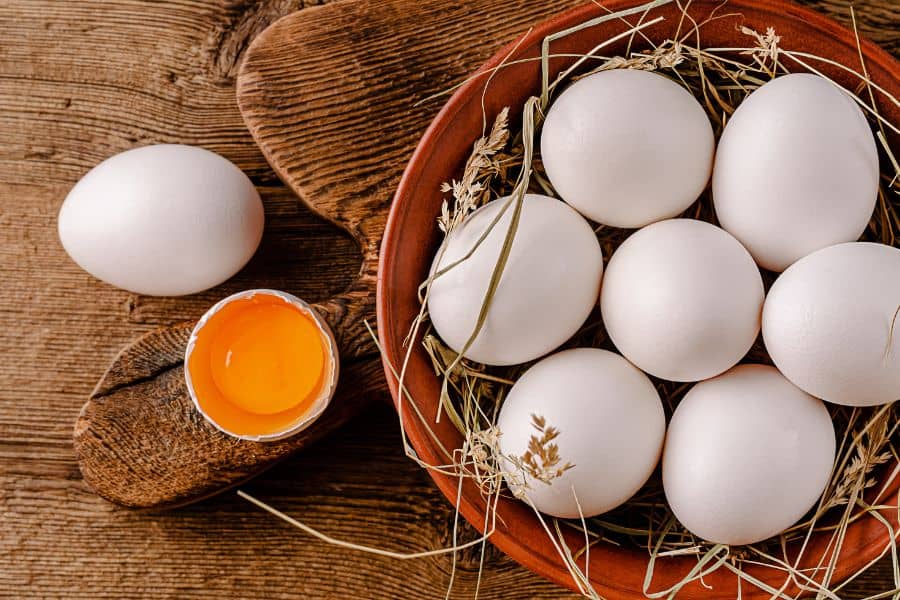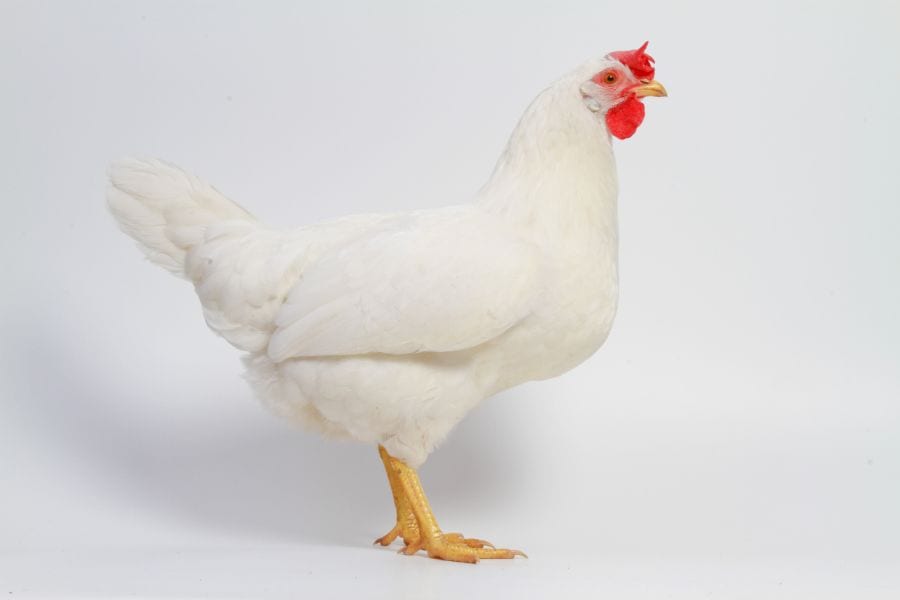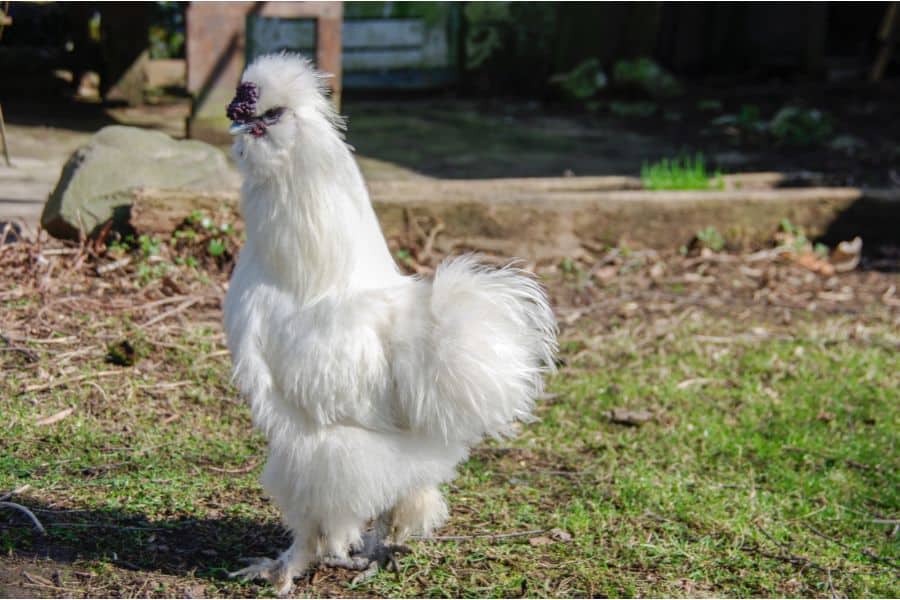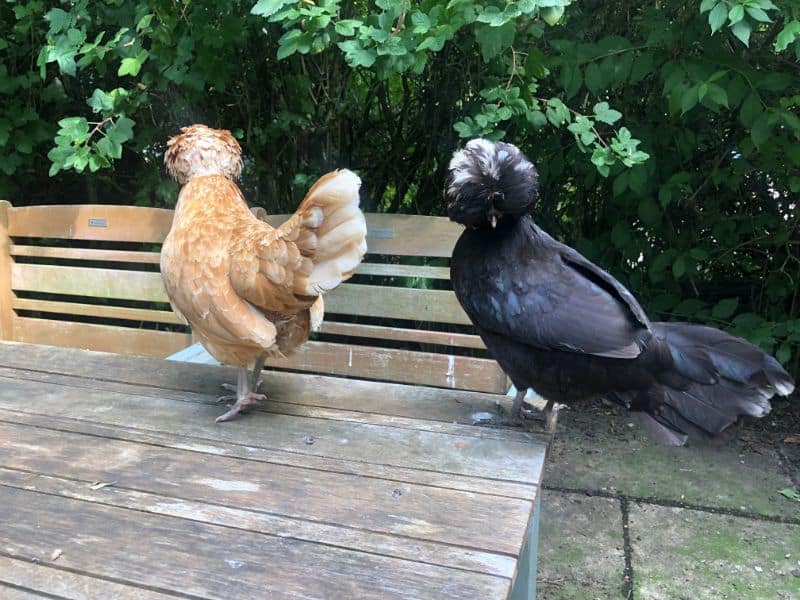Various chickens lay eggs in diverse colors, from classic white and brown eggs to exquisite shades like green and blue.
Usually, the color of eggs to expect from your clucking companion depends on their breed. Therefore, if targeting a specific color of eggs from your flock, it’s good to know what breeds are genetically predisposed to give that shade of eggs.
In this article, we’ll explore some of the renowned layers of white eggs. Right from the iconic Leghorns to the mesmerizing Andalusians, we’ve thoughtfully curated a list of the world’s finest layers of white eggs, so read on!
Chicken Breeds That Lay White Eggs
Who doesn’t love the pristine look of white eggs? I certainly do, and I suspect your affinity for them brought you to this article.
And usually, the external appearance of an egg depends on the chicken breed. That’s in stark contrast with the color of the yolk, which varies with diet.
With that said, here are some breeds you can expect to give you exclusively white eggs throughout their laying cycle.
1. Leghorns
When we hear about white eggs, the first breed that usually comes to mind is the Leghorn. And well, it’s probably because they’re the most prolific layers of white eggs in the chicken world.
The breed is of Italian origin and was first called “Italians”, but later renamed “Leghorn” in the 19th century. These chickens come in various colors, although white is the most common.
Leghorns are dual-purpose, but they’re more famous for egg production than their meat role, producing 280 to 320 eggs annually.
The egg-laying typically commences once the chicken is at least 20 weeks of age, but there are rare instances when the cycle commences at 17 or 18 weeks.
You can always tell that the bird is getting closer to their first egg by monitoring the color of the legs. They will turn less yellow and more pale the closer she gets to her egg-laying journey.
The egg is small initially, but as the bird grows, the size improves. Sometimes they come out so large that they even feature double yolks! Also, they’re consistent, owing to the fact that they’re a hardy breed less inclined to broodiness.
As for temperament, Leghorns are active and like to forage for their food. They still excel in confinements, though, so don’t worry if you don’t have a backyard. But then, before you bring them to your home, know they aren’t among the quietest breeds.
Fun Fact:
Leghorns can have a rose or a large single comb, setting them apart from most breeds with only one comb type. However, it’s worth noting that the Italian association only recognizes single-combed variants.
2. California White
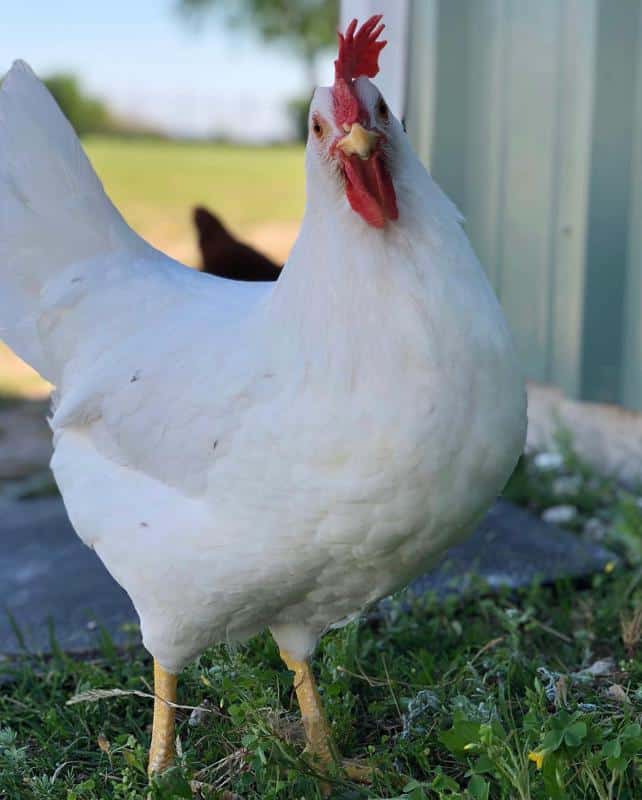
The second breed on the list is a product of the predecessor. It’s created from a cross between a Leghorn white hen and a California Gray rooster, with the moniker “California White” coming from the two parents.
The sex-linked chicken is a dual-purpose breed; serving as an eggcellent layer and an incredible bird for the table at the same time. It features predominantly white plumage, like the mom, although with black flecks, especially around the back and tail.
As a hybrid chicken, California whites are highly proficient layers, sometimes surpassing their prolific moms at the role. Typically, these chickens will deliver 5 to 6 eggs per week, translating to at least 300 large eggs per year.
In addition, similar to Leghorns, California whites are weather-hardy. As such, egg production won’t halt or diminish in winter. But then, unlike Leghorns, this breed is more inclined to broodiness, and you just can’t tell whether the bird you’re getting will focus more on laying eggs or hatching them.
Egg production typically begins at 17 weeks, quite earlier than most breeds. At this age, the new layers are still pullets, so expect smaller “pullet eggs” that grow larger as your feathered friends get older.
Chickens from this breed are just as active as the Leghorn mother and will appreciate more a setting where they can forage for their own food. They are quieter, though, making them a better option for anyone who wants a chicken breed that at least isn’t as vocal as the Leghorns.
Fun Fact:
Although the initial “Pullet eggs” of California whites are smaller than regular eggs, the size of the yolk is the same for pullet eggs as for the standard ones, meaning the pullet eggs are even richer in nutrients overall because of the larger ratio of yolk to white.
3. Ancona Chickens
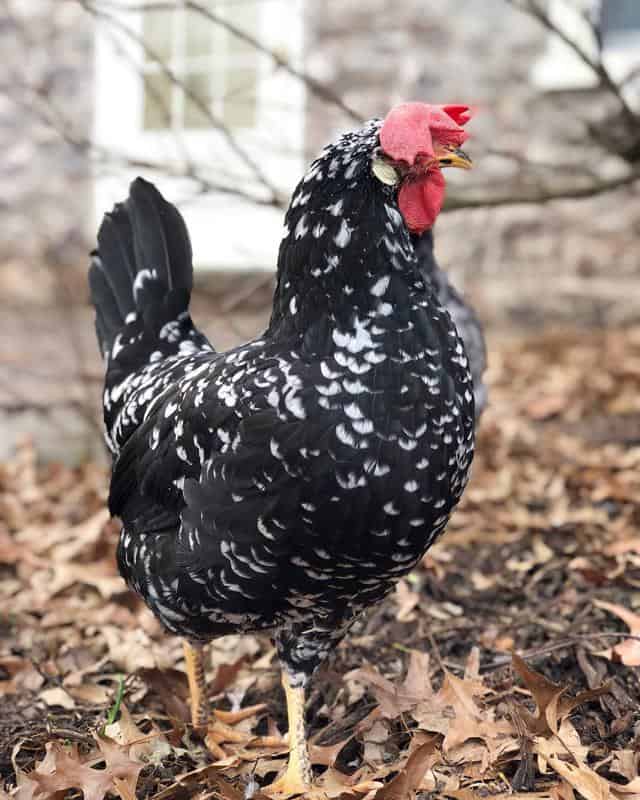
Ancona chicken originated from the Ancona province of Italy, which is where they get their name. The breed shares several characteristics with its Italian counterpart, Leghorn, and is sometimes called the mottled Leghorn.
For one, the body’s shape and size are much similar in the two breeds, with the only difference being that the back of the Ancona chicken slants downwards from shoulder to tail.
As for external appearance, Anconas are Black ground color mottled white, with the ideal bird featuring 1 white-tipped feather in every 5. They come with a single or rose comb, but the single type is more prominent and flops to one side in hens.
The chickens aren’t as proficient as their predecessors on our list, but they can still manage 220 eggs per year, which is still a decent count. They are weather-tolerant and rarely go broody, promising you a constant supply of eggs even in colder months, sometimes surpassing Leghorns in their winter yield.
Laying starts at 5 months, a timeframe that falls within a reasonable range. The eggs are usually medium to large, progressing from a smaller size as the bird becomes more adept at egg-laying.
Disposition-wise, Ancona chickens are generally hyperactive and exhibit deep foraging instincts. But beware — they can be a bit flighty, so ensure your fence is 1.8 to 2 meters high to keep them within your space.
Fun Fact:
Although Anconas breed true to their color, these birds have a very detailed standard that a renowned Ancona breeder, David Speak, was quoted saying that he had to breed 10 to get 1 good one.
4. Andalusian Chickens
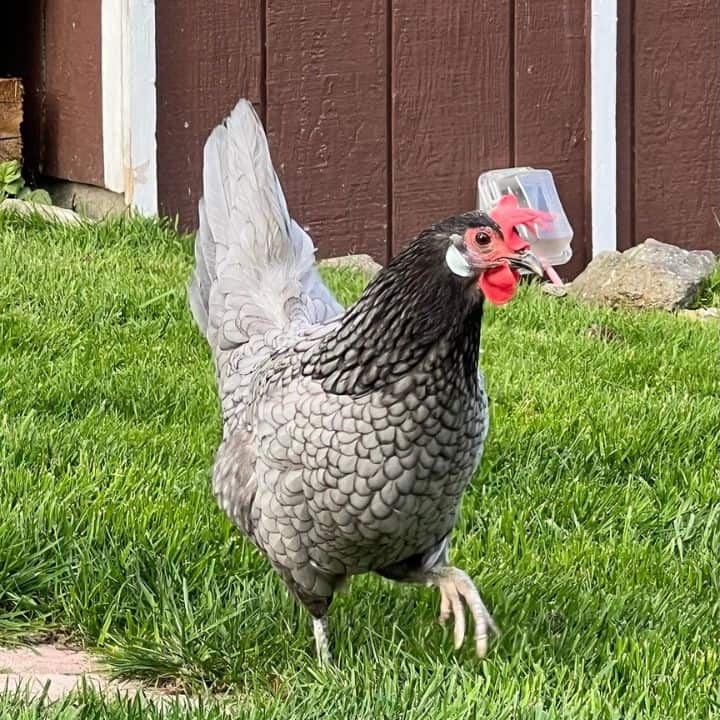
While the parents of this chicken aren’t clearly known, Andalusian chickens are Mediterranean birds whose arrival in America dates back to the mid 19th century.
The bird features blue plumage. Each feather has a clear bluish slate with a distinct black or dark blue lacing. The breed also comes with a bright-red single comb that seemingly flops to one side in hens.
Andalusians aren’t the most prolific producers of white eggs, but you can still expect 3 to 4 eggs every week, which sums up to 160 to 200 eggs by the end of the year.
The eggs are white — think of chalk-white — and medium to large in size. The eggs will keep coming even through the harshest winters, which is a good thing if you intend to use the chicken for growing your egg population.
When getting the breed, keep in mind that they love to free-range, just like the 3 predecessors. The only difference is that in this case, the space to roam is a must-have, as Andalusians don’t thrive in confinements.
About their temperament, expect friendly and curious birds towards humans. They, however, aren’t one of the most docile chickens you can bring to your home. Plus, they have very little interest in being moms, so you might have to rely on an incubator or other chicken breeds to hatch their eggs.
Fun Fact:
Andalusian chickens are genetically black, regardless of the color they actually exhibit. The color variation comes from a dilution gene that causes the color to fade out. The slate blue-color, which gives the breed its name, comes from a single dilution gene. Without the gene the bird is purely black; with two, it’s white.
5. Minorca Chickens
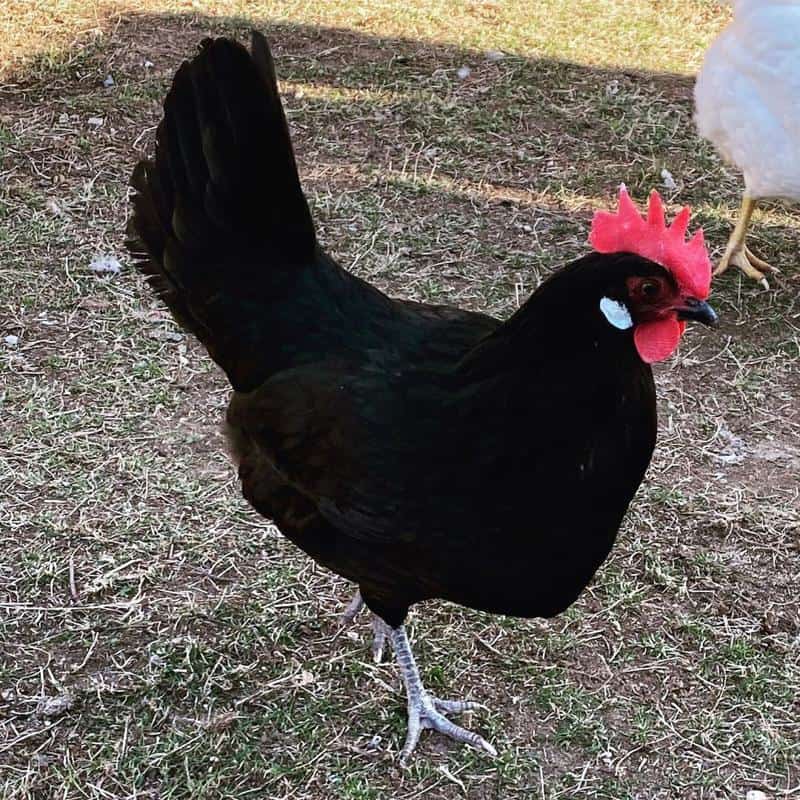
Minorca chickens, just like the Andalusians, are a Mediterranean breed, only that they are bigger. These chickens feature either a white, black, or buff plumage, and can be single or rose-combed.
All the single-combed males have six upright points, the same number as females, only that the latter have one point that falls on top of their beak while the remaining five flop on the opposite side.
As a giant Mediterranean bird, Minorca chickens lay the largest eggs of any other producer of white eggs. Their annual egg count tallies to 140 to 220 depending on the strain. That’s an impressive range even at its very lowest point, especially considering the size of the eggs.
Eggs start coming at around 22 to 26 weeks of age, still within a reasonable timeframe. The birds, however, aren’t very tolerant to cold weather, so don’t be surprised if their yield falls during the winter months.
You can choose to retain these dual-purpose chickens in confinement or let them free range. But as usual, the latter option is the best one if you have space. Roaming around, Minorca chickens will use their foraging instincts to find food, but they’ll still be eager to see what you have to offer to them.
As for their disposition, you’re getting calm birds who exhibit readiness to defend themselves whenever they feel bullied. That means they may not make the best companions for kids unless you train the bird that it’s okay to be handled right from the chick stage.
Of course, they’re also dual-purpose, although the meat is drier than most other chickens.
Fun Facts:
Minorca chickens are classified as the largest birds under the Mediterranean category, but that’s not the only record they hold — they also lay the largest eggs of all white egg-laying chickens!
6. Campine Chickens
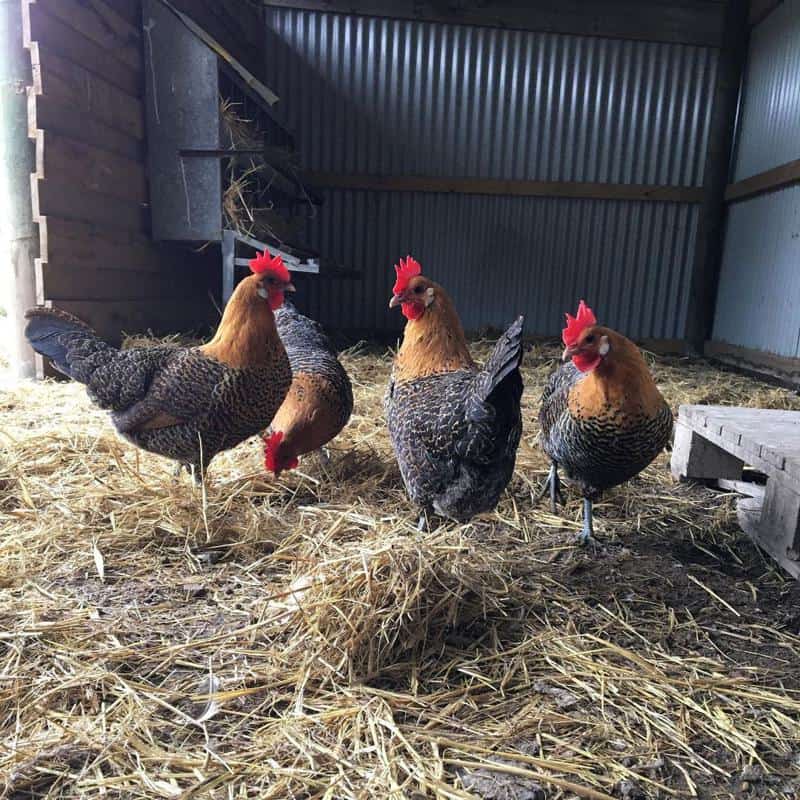
If you’re looking for a beginner-friendly white-egg layer, you might want to consider the Campine breed. The bird was developed in Belgium and is pronounced: “Kam-Peen”.
The non-broody bird is available in two recognized varieties — gray and gold and is one of the world’s rarest breeds. It’s a twofer, excelling as prolific layers and at the same time, as exhibition birds, thanks to the breed’s striking appearance.
As a layer, Campine hen will give you 140 to 200 eggs every year. The size is medium, yet large relative to the bird’s size, considering that females grow to only about 4 lbs, with males reaching 6 lbs.
The birds are highly inquisitive and love exploring their surroundings as they forage for food. However, they’re among the flighty breeds out there, so again, ensure that your fence is about 7 feet to keep the birds from your neighbor’s space.
You’ll also notice that Campines are generally friendly. But don’t let that fool you — they just don’t like being handled. As such, if you’re looking for a cuddly breed, it’s unfortunate that you may want to work with a breed best suited for the pet role.
Fun Fact:
Campine chickens are among the world’s rarest chickens with their global population estimated to be fewer than 1,000 chickens!
7. Hamburg Chickens
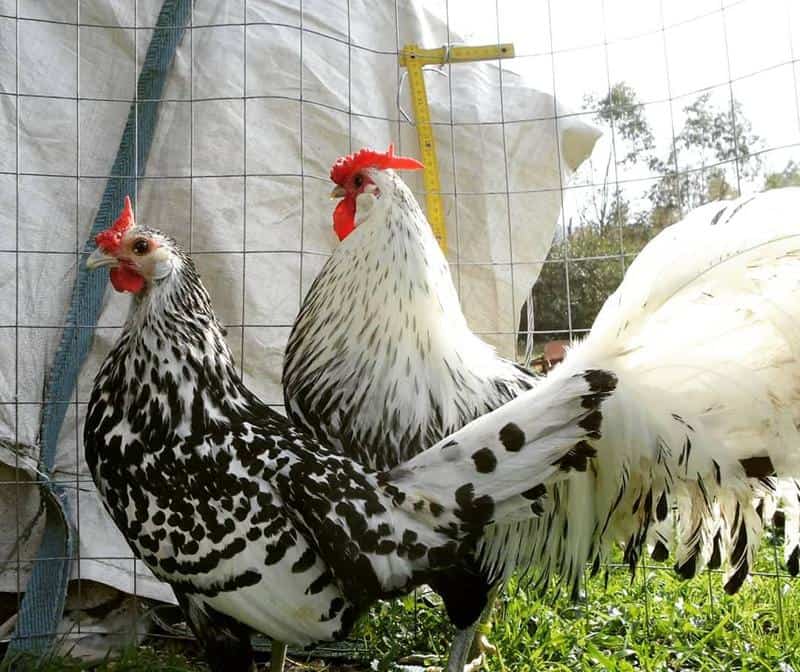
Although they bear a German name, Hamburg chickens are believed to have been developed in the Mediterranean area, particularly in Turkey. The exact year of their creation remains a mystery, but the fact that they were already in Holland as early as the 14th century means they’re among the oldest breeds.
The breed is available in six recognized varieties — silver penciled, golden penciled, silver spangled, golden spangled, white, and black. Citron pencilled and Citron spangled variants are also available, but they’re yet to be recognized by the American Standard of perfection.
Of course, the sizes differ with the strain, with penciled varieties being the smallest and self-colored variants the largest. The silver-spangled type is, however, the most popular.
Depending on the strain, you can expect 125 and 200 eggs annually from your Hamburg hens. The pullets will commence egg production 4 to 5 months after they’re hatched and maintain the streak for several years.
However, considering they’re only a small to medium-sized breed, don’t expect the eggs to match the size of the larger breeds. They’re smaller to medium in size but with the promise of coming more regularly since the bird is non-broody and weather-hardy.
But all isn’t about eggs. Besides egg production, Hamburg chickens make excellent ornamental birds. The roos develop a sweeping tail that gives them an enchanting allure.
But beware, even with this beauty, these rose-combed chickens, especially the males, aren’t very friendly and tend to behave aggressively towards other breeds. This attribute creates the implication that they don’t make a good choice, whether for pets or children.
Fun Fact:
The silver-spangled color is exclusively available within Hamburg chickens. Consequently, choosing the variant becomes fool-proof, ensuring you’ll always make the right decision.
8. La Fleche Chickens
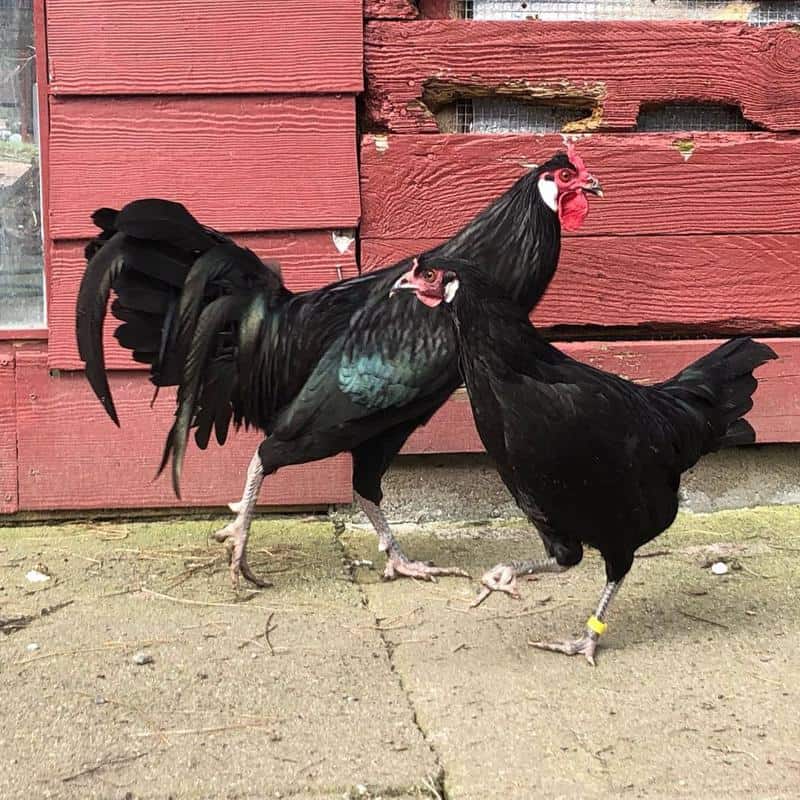
La Fleche chickens were created in France. The breed found its way to the United States in the 1850s and was recognized by the American Poultry Association Standard of Perfection in 1874.
La-Fleche chickens have pure black plumage, but other color variations exist in Europe. They are medium-sized with long, well-curved tails giving them an appearance akin to Spanish chickens, except for their V-shaped combs.
The females are seldom broody and can lay 140 to 220 large eggs (think 180 as the average). Egg production, however, only happens from March through October, and not throughout the year as with most breeds on our list.
La Fleche chickens also do well as meat birds. They are a favorite culinary delight for most chefs, thanks to their white tender meat known to fatten well, with the fat being distributed across the breast, thighs, legs and even back.
Depending on the available space, you can keep these chickens in enclosures or leave them to roam around. But in confinement, provide them with enough space to move about so they don’t get bored.
La Fleche isn’t one of the breeds you’ll want to work with if you need a cuddly chicken. Nonetheless, they’re social and should interact well with other breeds as long as there are no breeds.
Fun Fact:
The French name, “La Fleche”, is simply translated as “The Arrow”, which comes from the arrow-like shape of the birds’ V-shaped combs.
Related: Black Chicken Breeds
9. White Silkie Bantams
The White silkie bantam is another breed that can give you white eggs. The low-maintenance breed can produce about 2 eggs every week, translating to about 80 to 120 by the close of the year.
The eggs are relatively small, and coupled with their lower production volume, it becomes evident that White silkie bantams aren’t among the most prolific layers. But this aspect holds less significance, given the fact that these birds aren’t primarily bred for egg production.
Surprisingly, despite the poor yield, these fluffy feathered companions are more inclined to broodiness than the average chicken. They’ll sit on and hatch eggs from other chickens and raise the chicks like they’d do their own.
As such, you might want to consider this chicken breed if you have other producers of white eggs within your flock who don’t go broody often.
Besides their impressive maternal attributes, White silkie bantams are great pets. They are docile, friendly, and generally sweet-tempered chickens that can play the role of a chicken pet exceptionally well.
They also make great feathered companions for children, with their naturally smaller size making them an even more suitable choice for the role.
Fun Fact:
While most chickens have four toes on each foot, Silkies have five and sometimes even six, although the breed standard remains five!
10. Polish Chickens
Last but not least is the Polish chicken breed. These chickens come in various colors: black, blue, buff, golden, white, and silver. They have a prominent crest on their head that can come in various colors.
The large crest leaves them with obstructed vision, necessitating the need to alert them while approaching so they don’t mistake you for a predator and fly away.
The birds are considered excellent show birds, but they are highly versatile, also playing the roles of pet and egg producers perfectly. Their egg count can grow to 150 to 200 per year, and were once a common choice for the role before the inception of Leghorns.
The chickens will begin laying late in the season, but are more consistent producers of small to medium-sized eggs once they begin. Their egg-laying lasts about three to four years, but the size, volume, and eggshell quality diminish with time.
As pets, they’re friendly, calm, and gentle birds that can make great companions for kids. But remember, they’re easily frightened, so train your little ones the proper way to interact with them so they don’t get stressed out.
Whether using them as layers, pets, or show birds, Polish chickens should be kept in a warm and dry environment. Plus, due to the susceptibility of their crests to moisture and ice formation, it’s advisable to avoid getting this breed if you live in wet or cold areas.
And remember, the crests can sometimes attract lice, so monitor your birds closely to avoid spreading the parasite.
Fun Fact:
Although the name “Polish Chickens” suggests the breed to have come from Poland, historical records trace their origin back to the Netherlands!
Read More:
Conclusion
If you’re wondering what chicken breeds can lay white eggs, there are lots of them, as discussed. But then, it’s worth mentioning that although all our options produce white eggs, the volume, size, and laying habits differ from one breed to another.
It’s also worth noting that different breeds may exhibit varying dispositions, needs, and other aspects. Nonetheless, there’s a breed for everyone, so take your time to carefully examine each breed before making a choice.
